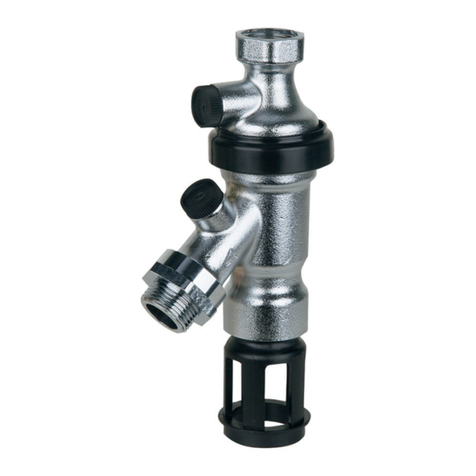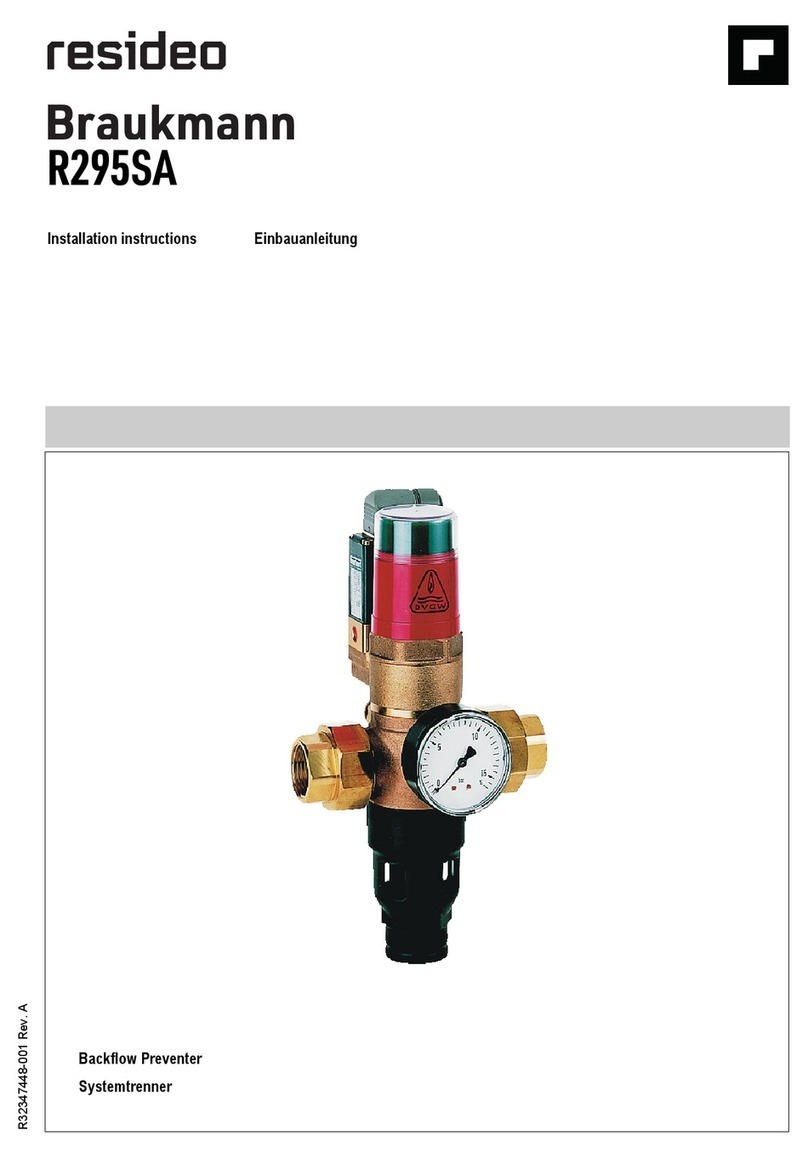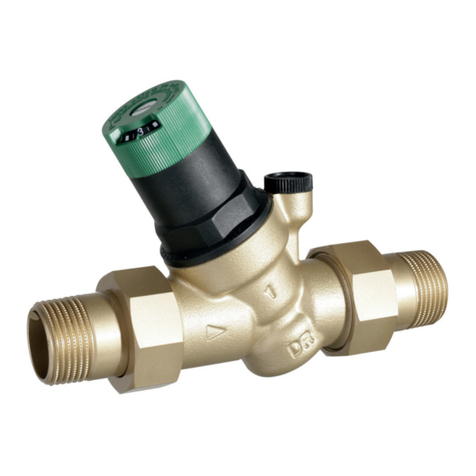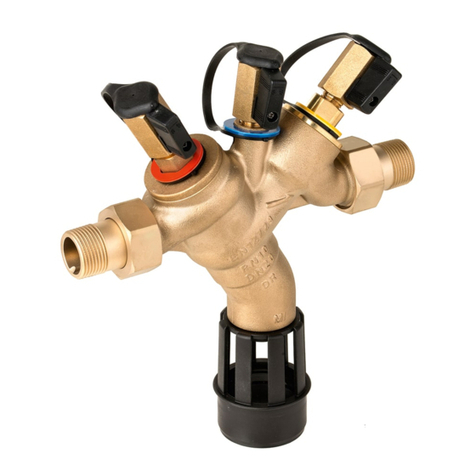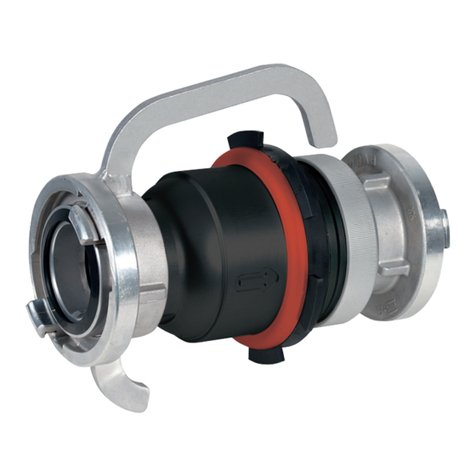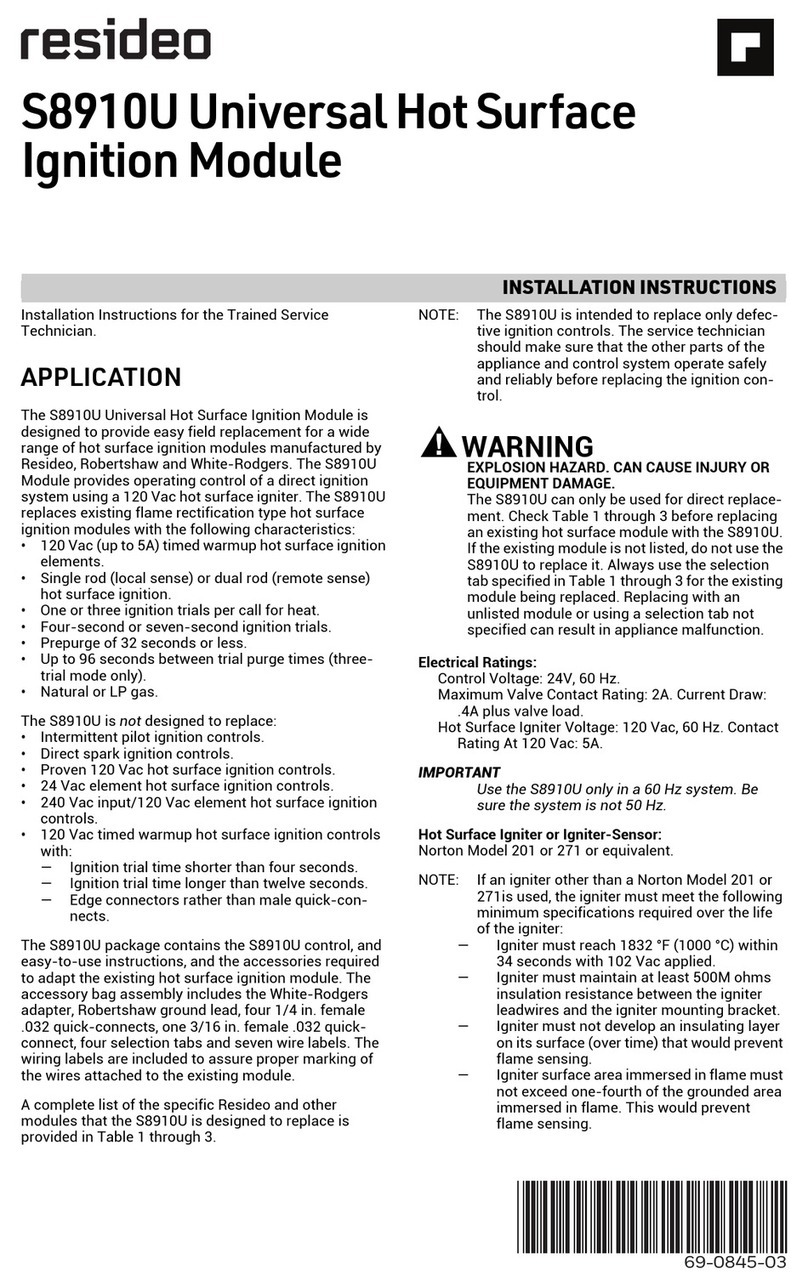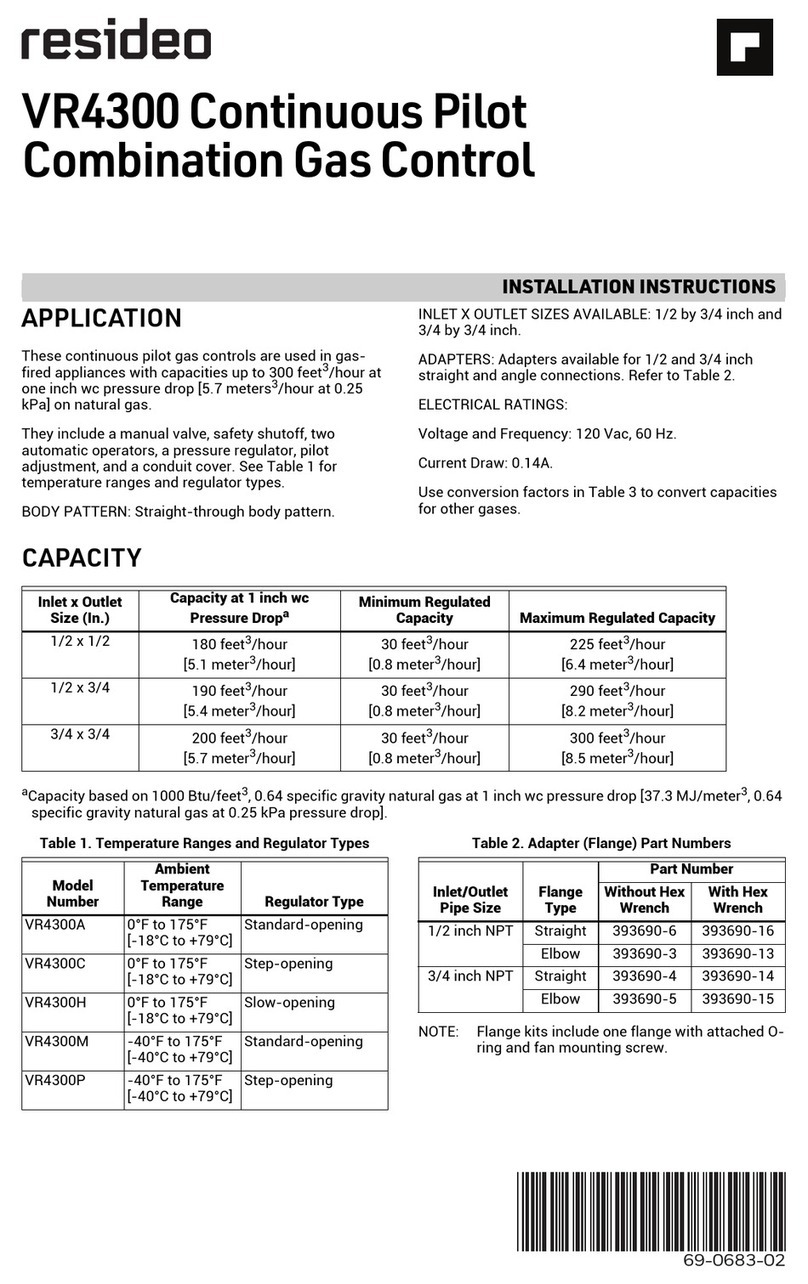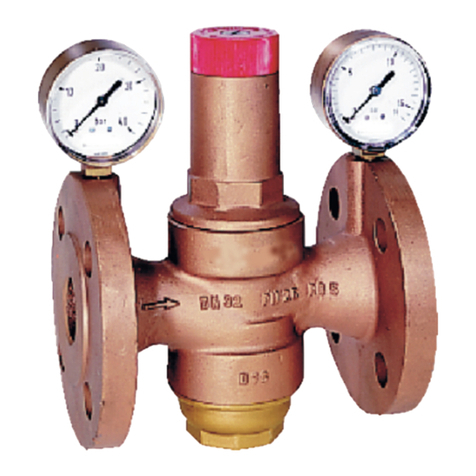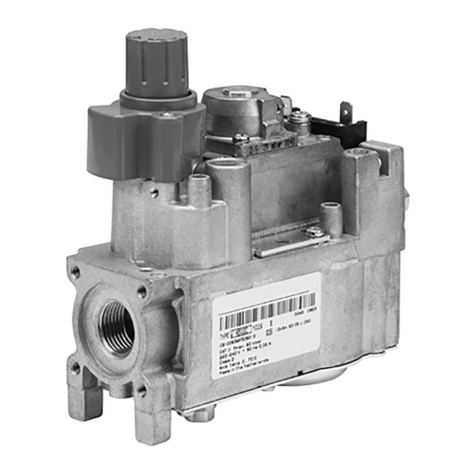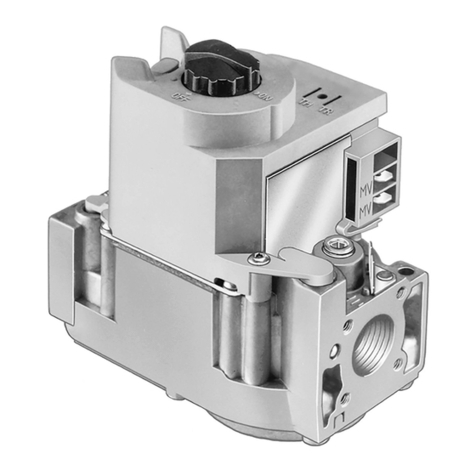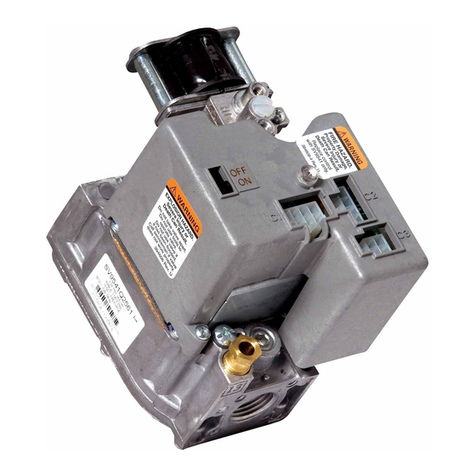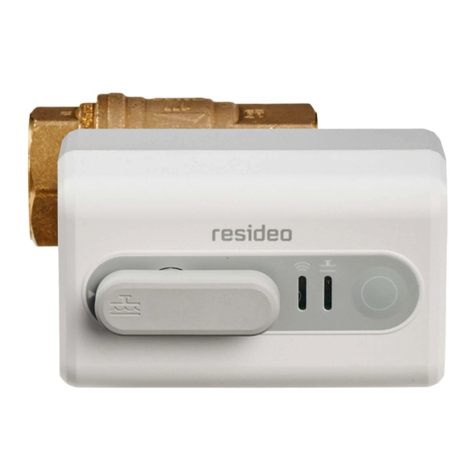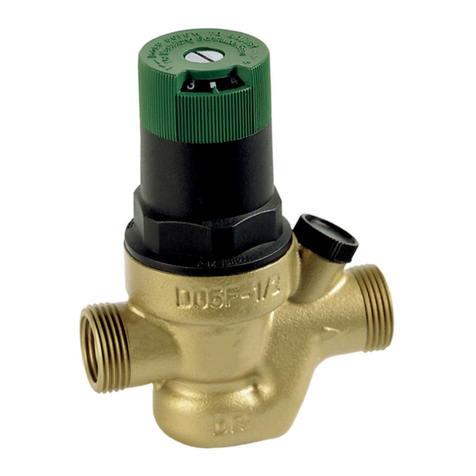
V8200A,C,H,M AND VR8200A,C,H,M CONTINUOUS PILOT COMBINATION GAS CONTROLS
69-0422—05 6
Perform Gas Leak Test
Fire or Explosion Hazard can cause property
damage, severe injury or death.
Check for gas leak with soap and water solution
any time work is done on a gas module.
Gas Leak Test
1. Paint pipe connections upstream of gas
control with rich soap and water solution.
Bubbles indicate gas leak.
2. If leak is detected, tighten pipe connections.
3. Stand clear of main burner while lighting to
prevent injury caused from hidden leaks which
could cause flashback in the appliance
vestibule. Light main burner.
4. With main burner in operation, paint pipe joints
(including adapters) and control inlet and
outlet with rich soap and water solution.
5. If another leak is detected, tighten adapter
screws, joints, and pipe connections.
6. Replace part if leak can't be stopped.
Light Pilot
1. Rotate the gas control knob clockwise to OFF.
Wait five minutes to allow any unburned gas to
dissipate. Sniff around the appliance near the floor.
Don't relight if you smell gas.
2. Rotate the gas control knob counterclockwise
to PILOT. Push down and hold the red reset
button while you light pilot burner according to
appliance manufacturer's instructions.
3. After about one minute, release reset button. Pilot
should remain lit. If it goes out, turn gas control
knob clockwise to OFF. To relight, repeat
steps 1-3.
4. After pilot remains lit when red reset button is
released, turn gas control knob counterclockwise
to ON.
Turn On Main Burner
Follow instructions provided by appliance manufacturer
or turn thermostat up to call for heat.
Adjust Pilot Flame
The pilot flame should envelop 3/8 to 1/2 in.
(10 to 13 mm) of the tip of the thermocouple. Refer to
Fig. 9.
1. Remove pilot adjustment cover screw.
Refer to Fig. 4.
2. Turn inner adjustment screw clockwise to
decrease or counterclockwise to increase
pilot flame.
3. Always replace cover screw after adjustment.
Tighten firmly to prevent gas leakage.
Fig. 9. Proper Flame Adjustment.
Check and Adjust Gas Input to Main Burner
1. Do not exceed input rating stamped on
appliance nameplate, or manufacturer's
recommended burner orifice pressure for size
orifice(s) used. Make certain primary air supply
to main burner is properly adjusted for
complete combustion. Follow appliance
manufacturer's instructions.
2. IF CHECKING GAS INPUT BY CLOCKING GAS
METER: Make certain there is no gas flow
through the meter other than to the appliance
being checked. Other appliances must remain
off with their pilots extinguished (or their
consumption must be deducted from the meter
reading). Convert flow rate to Btuh as
described in form 70-2602, Gas Controls
Handbook, and compare to the Btuh input
rating on appliance nameplate.
3. IF CHECKING GAS INPUT WITH MANOMETER:
Make certain gas control is in PILOT position
before removing outlet pressure tap plug to
connect manometer (pressure gauge). Also
turn gas control knob back to PILOT when
removing gauge and replacing plug. Before
removing inlet pressure tap plug, shut off gas
supply at the manual valve in the gas piping to
the appliance or, for LP, at the tank. Also shut
off gas supply before disconnecting
manometer and replacing plug. Repeat Gas
Leak Test at plug with main burner operating.
Standard Pressure Regulator
1. Check the manifold pressure listed on the appli-
ance nameplate. Gas control outlet pressure
should match the nameplate.
2. With main burner operating, check gas control flow
rate using the meter clocking method or pressure
using a manometer connected to the outlet
pressure tap on the gas control. Refer to Fig. 4.
3. If necessary, adjust pressure regulator to match
appliance rating. Refer to Table 7 for factory set
nominal outlet pressure and adjustment range.
a. Remove pressure regulator adjustment cap and
screw.
b. Using screwdriver, turn inner adjustment screw
clockwise to increase or
counterclockwise to decrease gas
pressure to burner.
c. Always replace cap screw and tighten firmly to
ensure proper operation.
4. If desired outlet pressure or flow rate cannot be
achieved by adjusting the control, check the
control inlet pressure using a manometer at the
inlet pressure tap. If inlet pressure is in normal
range (refer to Table 7), replace the control.
Otherwise, take the necessary steps to provide
proper gas pressure on the control.
Step-Opening and Slow Opening Pressure
Regulator
1. Check the full rate manifold pressure listed on the
appliance nameplate. Gas control full rate outlet
pressure should match this rating.
2. With main burner operating, check the control flow
rate using the meter clocking method or pressure
using a manometer connected to outlet pressure
tap on the control. Refer to Fig. 4.
M3086B
PROPER FLAME
ADJUSTMENT
3/8 TO 1/2 IN.
(10 TO 13 MM)
THERMOCOUPLE
